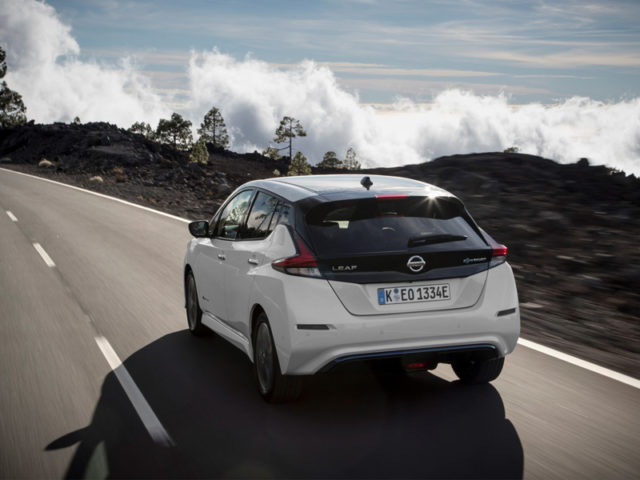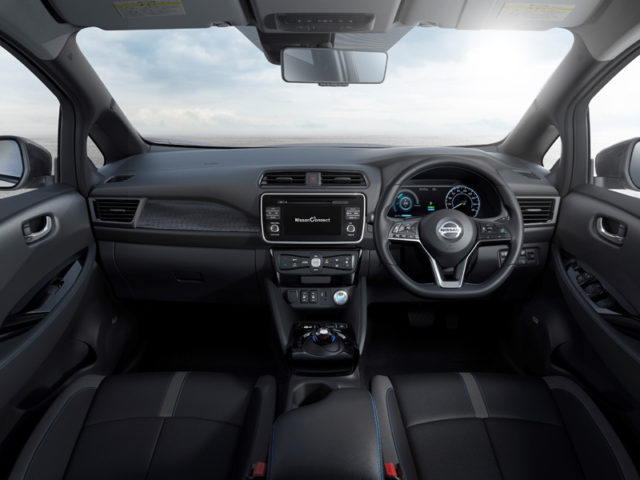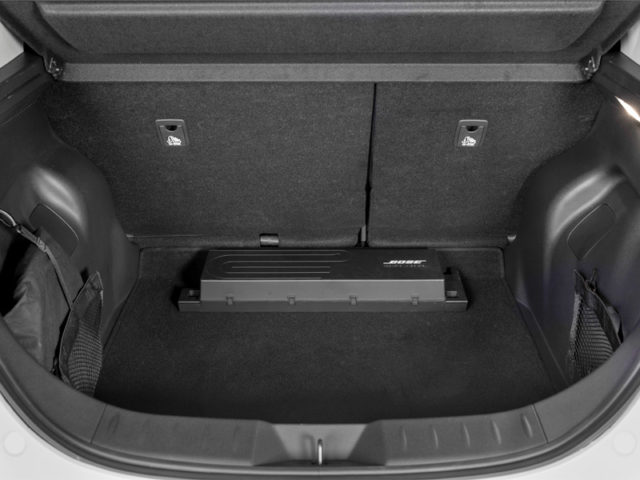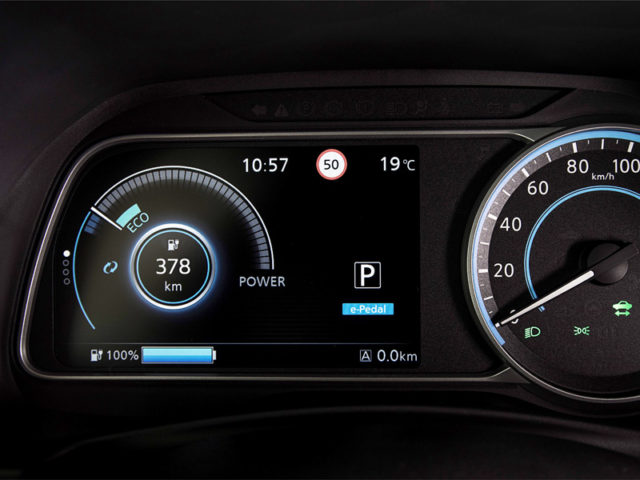First Drive: Nissan Leaf
Is the electric trailblazer still leading the way? Alex Grant finds out.
SECTOR Lower Medium PRICE €28,000-€33,000 Range 270/378km (WLTP/NEDC) CO2 0g/km
Nissan says customer feedback directly influenced over 100 improvements made to the new Leaf. So it’s ironic that the most obvious, surface-level change is predicted to make the biggest difference. With less divisive styling, Nissan is confident that it can sell twice as many this time around.
In part, that’s because customers otherwise loved the car. The outgoing Leaf had Nissan’s highest satisfaction and customer retention ratings, and sold in big enough numbers that it’s arguably the household name for electric motoring. Looking a bit less challenging removes a hurdle to getting people behind the wheel – and the improvements aren’t just skin-deep.
It’s not obvious, but this is a heavy update of the outgoing car, largely to incorporate newer technology. The battery capacity has increased from 30kWh to 40kWh (and there’s an even larger pack still to come) within the same overall dimensions, and the motor produces 150hp instead of 110hp. In diesel terms, it’s equivalent of an upgrade from a typical 1.6-litre to a 2.0-litre engine.
The focus is driveability more than outright performance. It doesn’t feel any quicker at low speeds, but the power doesn’t tail off like it used to, which makes for easier overtaking and highway cruising. A stiffer bodyshell, softer suspension and Qashqai-derived chassis technology all help shed that slightly top-heavy feel of the outgoing car. It’s not sporty, but it rides and handles well, and inspires a little more high-speed confidence than its predecessor.
Increased range is important, too. The bigger battery offers a claimed real-world range of almost 300km under mixed conditions, and nearly 350km in town. Both seem realistic, and standard-fit rapid charging can restore 80% of that in around 40 minutes. While the range isn’t ground-breaking, every step forward makes electric driving suitable for even more people, and the longer-range model due next year should bring it in line with forthcoming rivals.
Not all of the advances are EV-specific. ProPilot, Nissan’s suite of assistance technologies, debuts on the Leaf offering the usual active lane-keeping and adaptive cruise control functions, as well as hands-off, feet-off parking. The latter is particularly clever, using the surround-view cameras to recognise white lines in perpendicular spaces, but is quite slow to manoeuvre. Motorway assistance is useful too, but it struggled with lane markings and was prone to tweaking the throttle and brakes around other cars.
The e-Pedal is simpler, and far more impressive; it’s essentially a mode that allows most driving to be done without touching the brake pedal. Lift off the throttle and the Leaf seamlessly combines strong regenerative braking and the disc brakes to slow the car, all the way to a stop. It’s a clever system, and doesn’t take long to become second nature.
Otherwise, it feels quite a lot like the old car. Exterior dimensions are almost unchanged, the cabin still seats four adults with a fifth straddling the hump between the rear footwells, and boot capacity is among the largest in the segment. The dashboard is completely new, but there’s still no reach adjustment on the steering wheel. The infotainment system is also carried over – it’s not the most intuitive system on the market, but it does at least now have Android Auto and Apple CarPlay as an alternative.
Attitudes to electric cars have changed beyond recognition since 2011, and the Leaf has had a large role in that shift. By chipping away at its weaker points, the new one feels well placed to capitalise on growing customer demand – the big difference is, there’s no styling hurdle to overcome before they make the switch.
What we think
The Leaf has been a bit of an EV trailblazer, and this new version easily puts it back up amongst the best. But, with a wide choice of alternatives, and some longer-range rivals in the pipeline, not pushing the boat out on range and charging times feels like a bit of a missed opportunity.
Highlights
- Combined-cycle range of 270km under new WLTP ‘real-world’ conditions (urban: 389km).
- Rapid charging to 80% in 40 minutes, and vehicle-to-grid compatible.
- ProPilot assisted parking and cruise control, e-Pedal single-pedal driving.
- Nissan’s e-Pedal enables 90% of driving to be done with one pedal.









